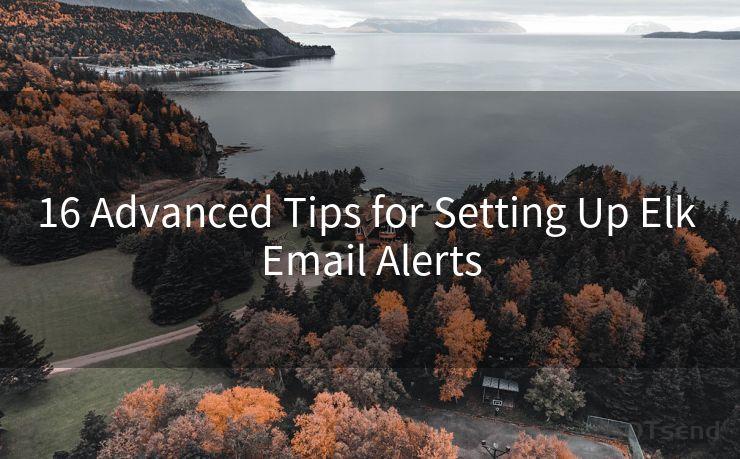16 Advanced Tips for Setting Up Elk Email Alerts




When it comes to log management and analysis, the ELK Stack (Elasticsearch, Logstash, and Kibana) stands out as a powerful tool. One of the most critical aspects of using ELK is setting up effective email alerts to promptly notify administrators about potential issues or anomalies. Here are 16 advanced tips to help you fine-tune your ELK email alert setup:
1. Define Clear Alert Criteria
Before setting up alerts, clearly define the criteria that trigger an alert. This could include specific log messages, error codes, or unusual patterns in your data.
2. Use Watcher for Elasticsearch
Elasticsearch Watcher is a powerful tool for setting up alerts based on complex conditions. Familiarize yourself with its query DSL to create precise alert rules.
3. Optimize Your Queries
Efficient queries are crucial for timely alerts. Optimize your Elasticsearch queries to minimize resource usage and ensure fast response times.
4. Test Your Queries
Before implementing alerts, test your queries in Kibana's DevTools to ensure they return the expected results.
5. Set Appropriate Alert Intervals
Determine the frequency of alert checks based on your system's needs. Too frequent checks can lead to unnecessary resource usage, while infrequent checks might delay critical alerts.
6. Configure Multiple Alert Levels
Set up different alert levels (e.g., warning, critical) based on the severity of the issue. This helps prioritize responses and manage incidents effectively.
7. Customize Alert Messages
Craft clear and concise alert messages that provide essential information about the trigger and recommended actions.
8. Utilize Templates for Alerts

Create reusable templates for common alert scenarios. This saves time and ensures consistency in alert formatting and content.
9. Integrate with External Systems
Integrate ELK alerts with external ticketing or incident management systems for a seamless response workflow.
10. Monitor Alert Performance
Regularly review the performance of your alert system, including response times and false positives, to fine-tune your setup.
11. Implement Throttling
To prevent alert floods, implement throttling mechanisms that limit the number of alerts sent within a specific time frame.
12. Use Suppressions Wisely
🔔🔔🔔
【AOTsend Email API】:AOTsend is a Managed Email Service for sending transactional emails. Support Email Types: reminders, authentication, confirmations, notifications, verification codes, invoices, password resets, account activations, billing statements, two-factor authentication (2FA), and one-time passwords (OTP) emails, etc. $0.28 per 1000 Emails. 99% Delivery, 98% Inbox Rate.
You might be interested in:
Why did we start the AOTsend project, Brand Story?
What is a Managed Email API, How it Works?
Best 25+ Email Marketing Platforms (Authority,Keywords&Traffic Comparison)
Best 24+ Email Marketing Service (Price, Pros&Cons Comparison)
Email APIs vs SMTP: How they Works, Any Difference?
Suppress alerts for known issues or planned maintenance to reduce noise and improve alert relevance.
13. Leverage Kibana Dashboards
Create Kibana dashboards that visualize alert data, making it easier to identify patterns and trends.
14. Document Your Alert Setup
Maintain detailed documentation on your alert configuration, including trigger conditions, recipient lists, and escalation procedures.
15. Regularly Update Your Rules
As your infrastructure and applications evolve, update your alert rules to reflect these changes.
16. Test Your Alert System
Periodically test your alert system to ensure it functions as expected during real-world scenarios.
By following these advanced tips, you can significantly enhance your ELK email alert setup, ensuring timely and accurate notifications that help you proactively manage your IT environment. Remember, an effective alert system is a crucial component of any robust monitoring and logging strategy.




Scan the QR code to access on your mobile device.
Copyright notice: This article is published by AotSend. Reproduction requires attribution.
Article Link:https://www.mailwot.com/p5271.html



